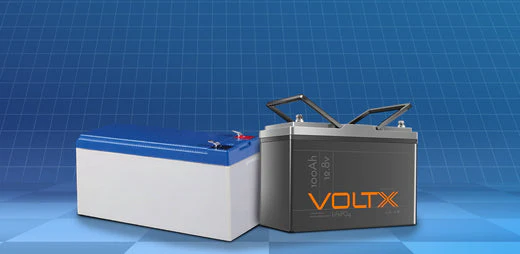In recent years, the electric vehicle (EV) market has been buzzing with innovations, but none have captured attention quite like Lithium Iron Phosphate (LFP) batteries. According to Bloomberg Green, LFP batteries are slated to become a game-changer in 2024, promising greater efficiency, safety, and affordability for electric vehicles. As the world accelerates towards sustainable transportation, understanding how LFP batteries are poised to revolutionize the EV market is crucial. This article explores the rise of LFP technology, its benefits, and what it means for consumers and the environment alike.
What Are LFP Batteries?
Understanding Lithium Iron Phosphate Technology
LFP batteries, a type of lithium-ion battery, have been around since the 1990s, but only recently gained traction in the automotive industry. Unlike traditional lithium-ion batteries that utilize cobalt, LFP batteries use lithium iron phosphate as the cathode material. This composition provides several key advantages:
- Safety: LFP batteries are less prone to overheating and fires, offering a safer alternative for EVs.
- Longevity: They have a longer lifespan, often exceeding 2,000 charging cycles, making them ideal for long-term use.
- Cost-Effectiveness: With no cobalt, the production cost is lower, translating to more affordable EVs.
The Rise in Popularity
According to a report by PV Magazine, the global demand for LFP batteries is expected to grow by 30% annually through 2024. Companies like Tesla and BYD have already begun integrating LFP technology into their vehicles, citing superior safety and cost benefits.
Benefits of LFP Batteries in the EV Market
Enhanced Safety Features
One of the most significant advantages of LFP batteries is their improved safety profile. Traditional lithium-ion batteries can pose risks of thermal runaway, leading to fires. LFP batteries, however, are chemically stable and have a higher thermal threshold, significantly reducing such risks. This makes them an attractive option for manufacturers prioritizing consumer safety.
Cost and Economic Impact
LFP batteries eliminate the need for cobalt, a costly and ethically contentious resource. As reported by Reuters Mobility, the reduced reliance on cobalt not only lowers production costs but also mitigates supply chain issues. This economic efficiency is likely to drive down the price of electric vehicles, making them accessible to a broader audience.
Environmental Benefits
- Sustainability: LFP batteries are made from more abundant materials, minimizing environmental impact.
- Recyclability: They are easier to recycle compared to their cobalt-based counterparts, reducing waste and promoting sustainability.
Performance and Range
Though LFP batteries typically offer a lower energy density than nickel-cobalt-aluminum (NCA) batteries, advancements are closing this gap. The latest models are achieving ranges comparable to conventional lithium-ion batteries, meeting consumer expectations for performance and reliability.
How LFP Batteries Will Shape the Future of EVs
Adoption by Major Brands
Several major automotive brands are embracing LFP technology. Tesla, for example, has introduced LFP batteries in its entry-level Model 3 in China, with plans to expand globally. Similarly, BYD, a leader in battery technology, has equipped its flagship models with LFP batteries, showcasing their commitment to innovation and sustainability.
Charging Infrastructure and Availability
To maximize the benefits of LFP batteries, a robust charging infrastructure is essential. Fortunately, global efforts are underway to expand charging networks. According to the International Energy Agency (IEA), the number of public charging points worldwide is expected to increase by 40% by 2024, facilitating the shift to LFP-equipped EVs.
Consumer Considerations
For consumers interested in purchasing an LFP-equipped EV, consider the following:
- Research Brands: Look for manufacturers that offer LFP technology, such as Tesla, BYD, and Hyundai.
- Evaluate Needs: Consider the trade-offs between energy density and safety when selecting an EV model.
- Check Charging Options: Ensure access to compatible charging stations in your area.
Practical Value: Making the Most of LFP Batteries
How to Charge LFP Batteries Efficiently
- Use Standard Chargers: LFP batteries are compatible with standard EV chargers, but always follow manufacturer guidelines.
- Avoid Fast Charging: While possible, frequent fast charging can reduce battery lifespan.
- Optimal Storage: If storing your EV for extended periods, maintain a charge between 40-60% to preserve battery health.
Where to Buy LFP-Equipped EVs
- Online Platforms: Check manufacturer websites and authorized dealers for the latest LFP models.
- Showrooms: Visit showrooms of brands like Tesla, BYD, and Hyundai to experience LFP technology firsthand.
Conclusion: The Future of LFP Batteries in the EV Market
In summary, LFP batteries are set to transform the electric vehicle landscape by 2024, offering enhanced safety, cost-effectiveness, and sustainability. As major brands adopt this technology and infrastructure expands, consumers can expect more affordable and reliable EV options. Are you ready to make the switch to an LFP-equipped vehicle? As we look to the future, it’s clear that LFP batteries will play a pivotal role in driving the green revolution in transportation.
Stay tuned to industry trends and prepare for a future where LFP technology not only meets but exceeds our expectations for safe, affordable, and sustainable transportation.

